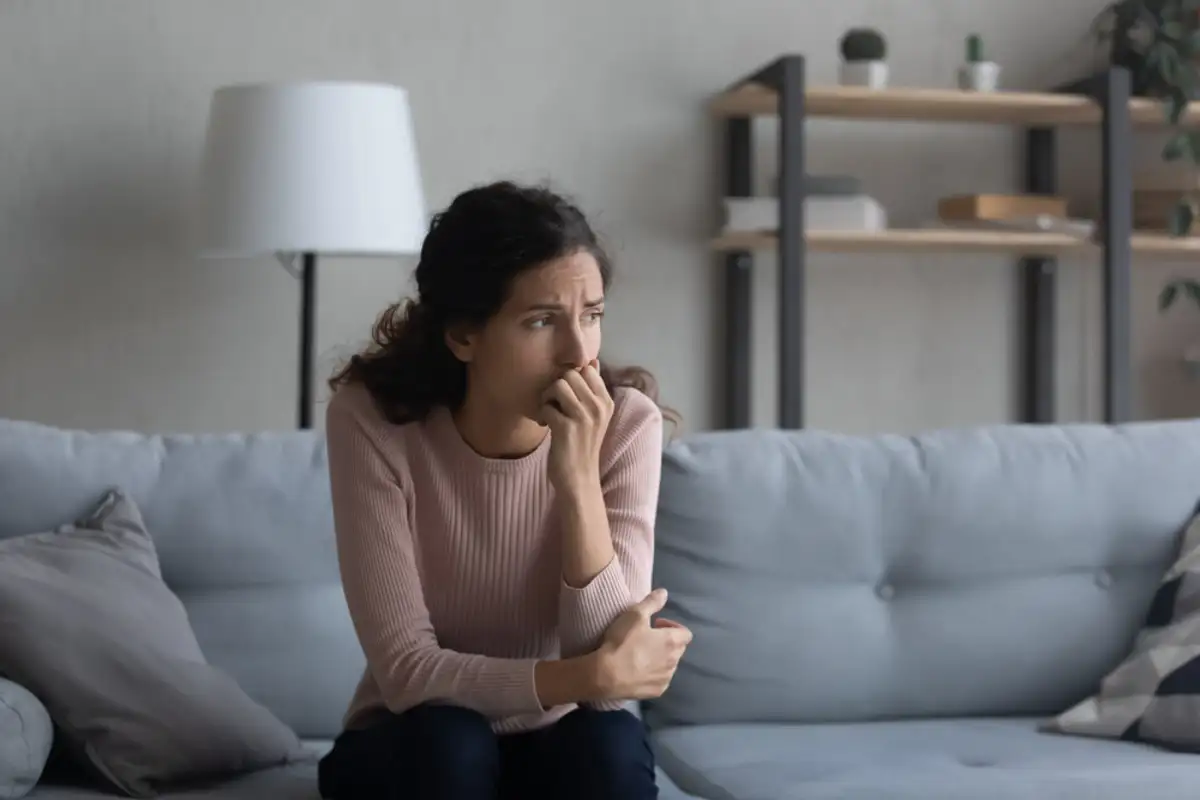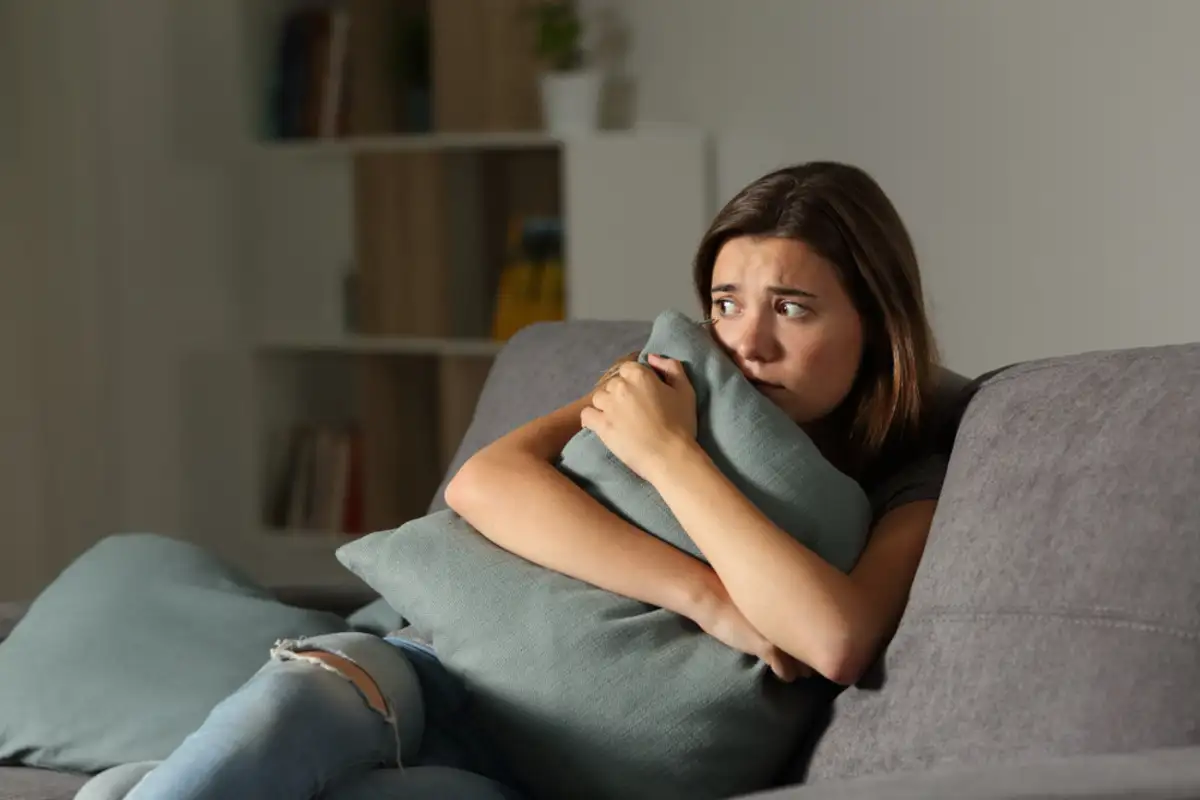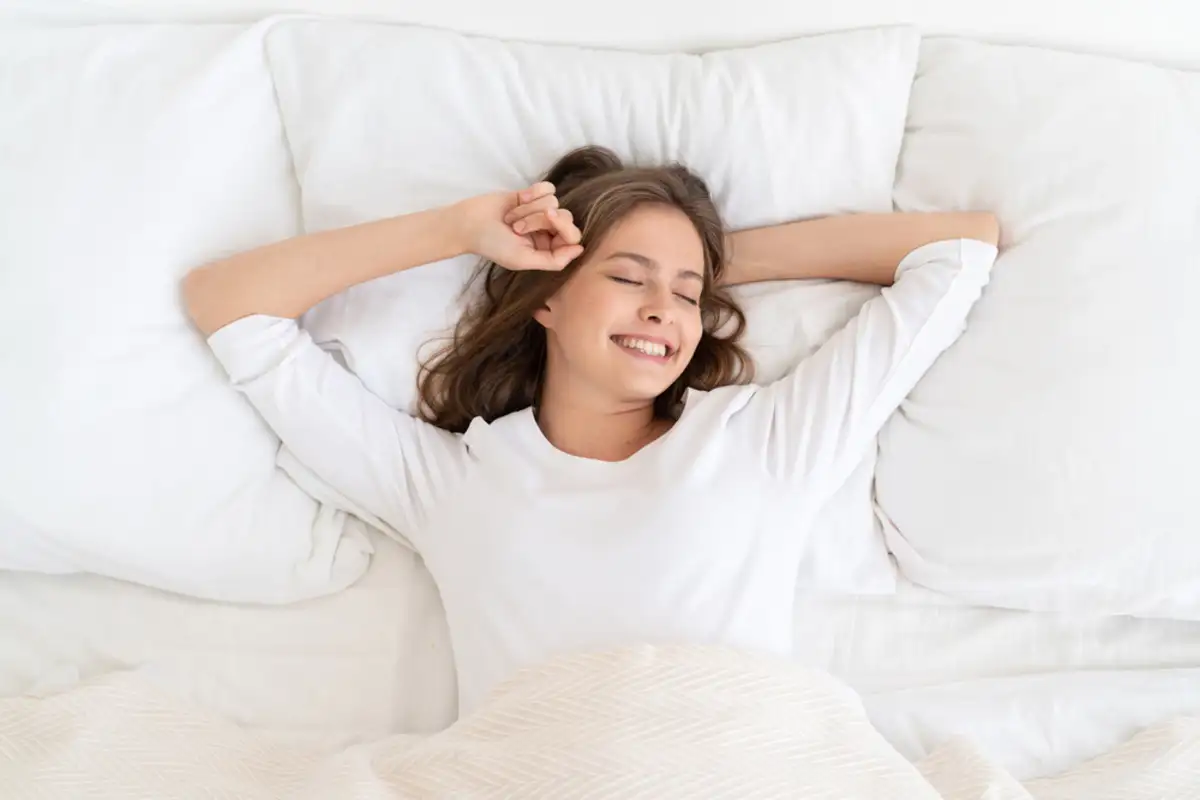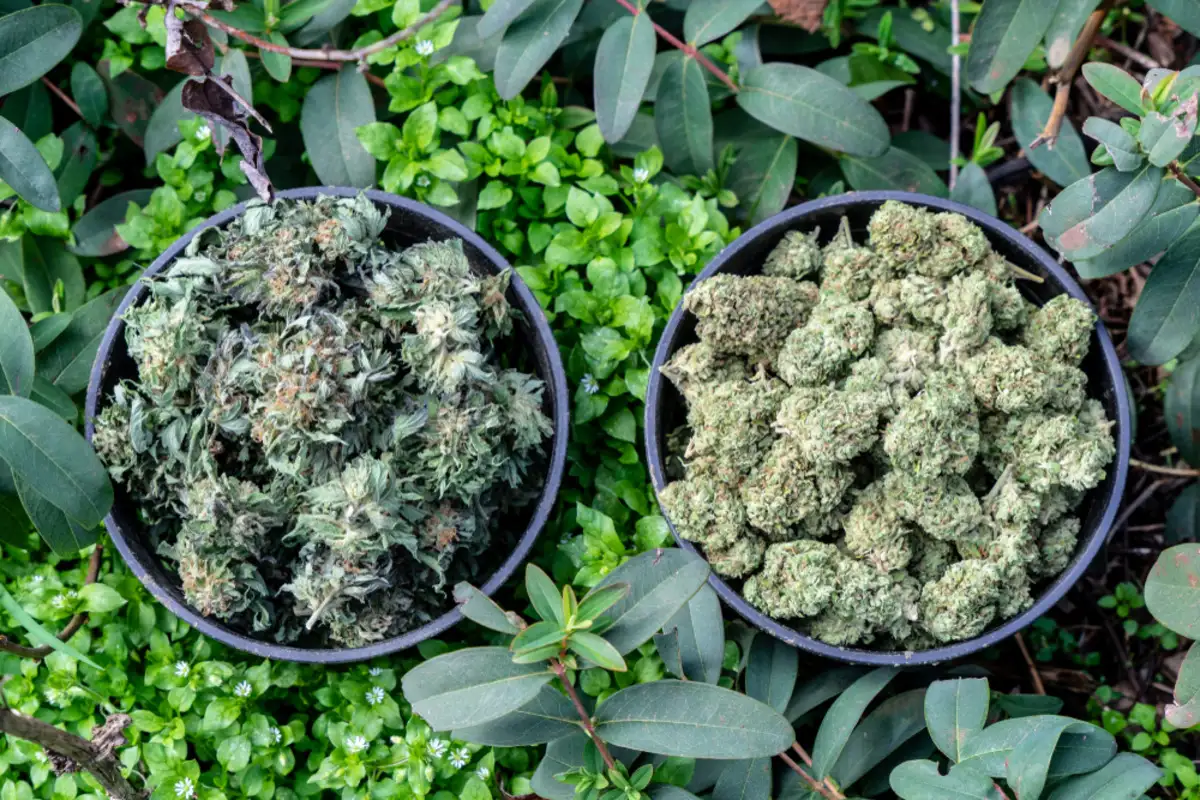In recent years, there has been a growing interest in using cannabis as a potential treatment for anxiety. With its various therapeutic properties, cannabis has become an attractive option for individuals seeking natural alternatives to manage their anxiety symptoms. However, with numerous cannabis strains available on the market, it can be overwhelming to determine which one is best suited for anxiety relief.
In this blog post, we will delve into the world of cannabis strains and explore the question: What is the best cannabis strain for anxiety? We will provide you with a comprehensive guide to understanding anxiety, the different types of cannabis strains, and how they affect the brain. Additionally, we will discuss the research surrounding cannabis and anxiety, potential risks and side effects, and ultimately, reveal the top cannabis strains that may help alleviate anxiety symptoms.
Before we dive into the specific strains, it is important to understand the key differences between indica and sativa strains, as well as the role of THC and CBD in cannabis. We will explore how these factors contribute to the overall effects of each strain and their potential impact on anxiety.
Furthermore, we will explore the relationship between cannabis and anxiety, including how it interacts with the endocannabinoid system, and the existing scientific research on its efficacy in treating anxiety disorders. We will also provide insights into the potential risks and side effects associated with cannabis use for anxiety, ensuring that readers have a well-rounded understanding.
After laying the groundwork, we will introduce you to the top cannabis strains that are commonly recommended for anxiety relief. These strains include ACDC, Northern Lights, Granddaddy Purple, Jack Herer, and Cannatonic. We will discuss the unique properties of each strain and how they may benefit individuals experiencing anxiety symptoms.
Finally, we will conclude the blog post by offering practical tips on how to use cannabis for anxiety safely. This includes starting with low THC strains, considering microdosing, monitoring your reactions, and consulting with a healthcare provider to ensure personalized and informed usage.
Whether you are new to the world of cannabis or seeking alternative options for anxiety relief, this blog post will provide you with valuable insights and guidance. Stay tuned as we explore the best cannabis strain for anxiety and empower you to make informed decisions about your mental health journey.
Understanding Anxiety: Causes, Symptoms, and Treatments
Anxiety is a common mental health condition that affects millions of people worldwide. Before delving into the best cannabis strains for anxiety, it is essential to have a solid understanding of what anxiety is, its potential causes, common symptoms, and available treatments. This section will provide a comprehensive overview of anxiety, empowering readers to grasp the complexity of this condition.
What is Anxiety?
Anxiety is a natural response to stress or perceived threats. It is characterized by feelings of fear, worry, and unease, often accompanied by physical symptoms such as increased heart rate, sweating, and trembling. While some level of anxiety is normal and can even be beneficial in certain situations, individuals with an anxiety disorder experience excessive and persistent worry that significantly impacts their daily life.
Causes of Anxiety
The causes of anxiety are multifaceted and can vary from person to person. Genetic factors, brain chemistry imbalances, traumatic events, and environmental stressors can all contribute to the development of anxiety disorders. Understanding the underlying causes can help individuals better manage their anxiety and explore appropriate treatment options.
Common Symptoms of Anxiety
Anxiety can manifest in various ways, and symptoms can differ from person to person. Some common symptoms include:
- Excessive worrying and fear
- Restlessness and irritability
- Difficulty concentrating
- Sleep disturbances, such as insomnia
- Muscle tension and physical discomfort
- Panic attacks, characterized by sudden and intense fear
It is important to note that anxiety symptoms can be subjective and may vary in intensity and frequency. If you suspect you may have an anxiety disorder, it is advisable to consult with a healthcare professional for a proper diagnosis.
Available Treatments for Anxiety
Fortunately, there are several effective treatments available for anxiety disorders. The most common approaches include:
- Therapy: Cognitive-behavioral therapy (CBT), exposure therapy, and other forms of psychotherapy can help individuals identify and manage their anxiety triggers and develop coping mechanisms.
- Medications: Antidepressants, anti-anxiety medications, and beta-blockers are commonly prescribed to alleviate anxiety symptoms. These medications should be used under the guidance of a healthcare professional.
- Lifestyle Modifications: Engaging in regular exercise, practicing relaxation techniques (such as deep breathing or meditation), maintaining a healthy diet, and getting adequate sleep can all contribute to reducing anxiety symptoms.
- Alternative and Complementary Therapies: Some individuals find relief from anxiety through practices like yoga, acupuncture, herbal supplements, and mindfulness.
Understanding the causes, symptoms, and available treatments for anxiety is crucial in finding the best approach to managing this condition. With this knowledge as a foundation, we can now explore how cannabis strains may offer potential relief for anxiety symptoms.
An Overview of Cannabis: Different Strains and Their Effects
Cannabis, also known as marijuana or weed, has gained significant attention for its potential therapeutic properties. Before delving into the best cannabis strains for anxiety, it is important to have a comprehensive overview of cannabis itself, including the different strains available and their effects. This section will explore the basics of cannabis, providing a foundation for understanding how different strains may impact anxiety.
Indica vs. Sativa: What’s the Difference?
The cannabis plant can be classified into two main categories: indica and sativa. These classifications are based on the plant’s physical characteristics, growth patterns, and the effects they produce when consumed.
Indica: Indica strains are typically associated with relaxing and sedating effects. They are known for their calming properties, which can help with pain relief, muscle relaxation, and promoting sleep. Indica strains are often recommended for individuals seeking relaxation and stress reduction.
Sativa: Sativa strains, on the other hand, are known for their energizing and uplifting effects. They tend to produce a more cerebral and creative high, making them suitable for daytime use. Sativa strains are often recommended for individuals looking to enhance focus, creativity, and sociability.
It is important to note that these classifications are not absolute, and many cannabis strains are hybrids that combine characteristics of both indica and sativa.
Understanding THC and CBD
Two primary compounds found in cannabis are THC (tetrahydrocannabinol) and CBD (cannabidiol). These compounds interact with the body’s endocannabinoid system and contribute to the effects experienced when consuming cannabis.
THC: THC is the psychoactive compound in cannabis that produces the “high” sensation. It has been associated with euphoria, relaxation, and altered perception. Higher levels of THC in a strain can potentially lead to increased anxiety or paranoia in some individuals.
CBD: CBD is a non-intoxicating compound that is known for its potential therapeutic properties. It has been reported to have anti-anxiety, anti-inflammatory, and analgesic effects. CBD is often used to counteract the potential negative effects of THC, promoting a more balanced and calming experience.
The ratio of THC to CBD in a cannabis strain can significantly influence its effects and potential benefits for anxiety relief.
How Cannabis Affects the Brain
When cannabis is consumed, the cannabinoids in the plant interact with receptors in the brain and throughout the body’s endocannabinoid system. This interaction can influence various physiological processes, including mood, memory, pain perception, and stress response.
The specific effects of cannabis on the brain can vary depending on the strain, dosage, and individual factors. Understanding how cannabis affects the brain can provide insights into its potential impact on anxiety symptoms.
By gaining a solid understanding of cannabis, including the differences between indica and sativa strains, the role of THC and CBD, and how cannabis interacts with the brain, we can now explore the specific relationship between cannabis and anxiety.
Cannabis and Anxiety: How It Works
Cannabis has been widely recognized for its potential to alleviate anxiety symptoms. In this section, we will delve into the specific mechanisms of how cannabis interacts with the body to potentially reduce anxiety. By understanding the relationship between cannabis and anxiety, we can gain insights into how different strains may offer relief for individuals experiencing anxiety symptoms.
The Endocannabinoid System and Anxiety
To understand how cannabis affects anxiety, we must first explore the endocannabinoid system (ECS). The ECS is a complex network of receptors and neurotransmitters that plays a crucial role in regulating various physiological processes, including mood, stress response, and anxiety levels.
When cannabis is consumed, the cannabinoids, such as THC and CBD, interact with the receptors in the ECS. This interaction can modulate the activity of the ECS, potentially influencing anxiety levels. The exact mechanisms by which cannabis affects the ECS and anxiety are still being studied, but it is believed that cannabinoids can impact the release of neurotransmitters and regulate the overall balance within the ECS.
Research on Cannabis and Anxiety
Numerous studies have explored the potential benefits of cannabis in managing anxiety symptoms. However, it is important to note that the research is still in its early stages, and more rigorous studies are needed to fully understand the efficacy and safety of cannabis as a treatment for anxiety disorders.
Some studies suggest that certain cannabis strains or specific ratios of THC to CBD may help reduce anxiety symptoms. CBD, in particular, has gained attention for its potential anti-anxiety effects, as it may counteract the anxiety-inducing properties of THC.
However, it is important to recognize that individual responses to cannabis can vary greatly. What may work for one person may not have the same effect on another. Factors such as genetic predisposition, dosage, and the individual’s unique biochemistry can influence the response to cannabis.
Potential Risks and Side Effects
While cannabis may offer potential benefits for anxiety relief, it is essential to be aware of the potential risks and side effects associated with its use. Some individuals may experience adverse effects such as increased anxiety, paranoia, or cognitive impairment when consuming cannabis, particularly strains with high levels of THC.
Additionally, long-term cannabis use, especially in high doses, may have negative effects on mental health and cognitive function. It is important to use cannabis responsibly and in moderation, taking into consideration individual sensitivities and potential risks.
As with any treatment approach, it is advisable to consult with a healthcare professional before using cannabis for anxiety management. They can provide personalized guidance, assess potential risks, and ensure that cannabis is used in conjunction with other appropriate treatments.
By understanding the relationship between cannabis and anxiety, as well as the existing research and potential risks involved, we can make informed decisions about incorporating cannabis into our anxiety management strategies. In the next section, we will explore specific cannabis strains that are often recommended for anxiety relief.
Top Cannabis Strains for Anxiety
When it comes to finding the best cannabis strain for anxiety relief, it’s important to consider the unique properties and effects of different strains. In this section, we will explore some of the top cannabis strains that are commonly recommended for individuals experiencing anxiety symptoms. It’s worth noting that individual preferences and responses to strains can vary, so it’s important to experiment and find the strain that works best for you.
ACDC Strain
ACDC is a popular strain known for its high CBD content and low THC levels. It is often recommended for individuals seeking anxiety relief without the psychoactive effects typically associated with THC. ACDC is known for its calming properties and potential for reducing stress and promoting relaxation. It may be a suitable option for those looking to manage anxiety symptoms while remaining clear-headed and functional.
Northern Lights Strain
Northern Lights is an indica-dominant strain that is well-known for its relaxing and tranquil effects. It is often lauded for its potential to alleviate stress and anxiety, making it a popular choice among individuals seeking relief from anxiety symptoms. Northern Lights may induce a sense of deep relaxation and tranquility, which can be particularly beneficial for those experiencing high levels of stress and anxiety.
Granddaddy Purple Strain
Granddaddy Purple, also known as GDP, is an indica-dominant strain cherished for its potent sedative effects. It is often recommended for individuals seeking relief from both physical and mental tension associated with anxiety. GDP is known for its ability to promote relaxation, ease muscle tension, and potentially provide a calming effect on the mind. It may be beneficial for those experiencing anxiety-related sleep disturbances.
Jack Herer Strain
Jack Herer is a sativa-dominant strain that is acclaimed for its energizing and uplifting effects. While typically associated with increased focus and creativity, this strain may also provide anxiety relief for some individuals. Jack Herer’s cerebral effects may help alleviate racing thoughts and promote a more positive mindset, which can be beneficial for those experiencing anxiety symptoms.
Cannatonic Strain
Cannatonic is a well-balanced hybrid strain known for its equal levels of THC and CBD. This strain is often favored for its potential to provide anxiety relief while minimizing psychoactive effects. Cannatonic may induce a sense of relaxation and calmness, making it a suitable option for individuals seeking relief from anxiety without feeling overly sedated or impaired.
It’s important to note that the effects of cannabis strains can vary depending on individual factors and dosage. It is advisable to start with low doses and gradually increase as needed while monitoring your response. Additionally, consulting with a healthcare professional or knowledgeable budtender can provide valuable guidance in selecting the best cannabis strain for your specific needs.
In the next section, we will discuss how to use cannabis for anxiety safely, ensuring that you can make informed decisions when incorporating cannabis into your anxiety management routine.
How to Use Cannabis for Anxiety Safely
When considering using cannabis for anxiety relief, it is important to approach its usage with caution and prioritize safety. In this section, we will provide you with practical tips on how to use cannabis for anxiety safely. These guidelines will help you navigate the world of cannabis consumption and ensure that you have a positive and beneficial experience.
Start with Low THC Strains
If you are new to cannabis or have a low tolerance, it is advisable to start with strains that have lower levels of THC. High THC levels can potentially induce anxiety or paranoia in some individuals. By opting for strains with balanced THC and CBD ratios or higher CBD content, you can potentially mitigate the risk of adverse effects and achieve a more calming and balanced experience.
Consider Microdosing
Microdosing involves consuming very low doses of cannabis to achieve subtle therapeutic effects without experiencing strong psychoactive effects. This approach allows you to gauge your individual response to cannabis and find the optimal dosage for anxiety relief. Start with a small amount and gradually increase if needed, keeping in mind that less can sometimes be more when it comes to managing anxiety.
Monitor Your Reaction
When using cannabis for anxiety, it’s essential to pay close attention to your body and mind’s response. Observe how different strains affect your anxiety symptoms and overall well-being. Keep a journal to track the strains you’ve tried, their effects, and any side effects experienced. This information can help you identify patterns and make informed decisions about which strains work best for you.
Consult with a Healthcare Provider
Before incorporating cannabis into your anxiety management routine, it is crucial to consult with a healthcare provider or a knowledgeable professional who is familiar with cannabis use. They can provide personalized advice, take into account any potential drug interactions or contraindications, and ensure that cannabis is used in conjunction with other appropriate treatments. A healthcare provider’s guidance is particularly essential if you have underlying health conditions or are taking medications.
Practice Responsible Consumption
Responsible cannabis consumption involves adhering to local laws and regulations regarding cannabis use. It is important to obtain cannabis products from legal and reputable sources to ensure quality and safety. Additionally, always use cannabis in a safe and comfortable environment, and avoid driving or engaging in activities that require full attention while under the influence.
Be Mindful of Potential Side Effects
While cannabis can offer potential benefits for anxiety relief, it is important to be aware of potential side effects. These may include dry mouth, red eyes, increased heart rate, dizziness, and impaired cognitive function. If you experience any adverse effects, it is advisable to discontinue use or adjust your dosage accordingly.
By following these guidelines and using cannabis responsibly, you can minimize potential risks and maximize the potential benefits of cannabis for anxiety relief. Remember that everyone’s response to cannabis is unique, so it may take some experimentation to find the right strain, dosage, and method of consumption that works best for you.
In conclusion, utilizing cannabis for anxiety management can be a valuable tool when approached with caution and informed decision-making. Always prioritize your well-being and consult with healthcare professionals to ensure that you are using cannabis safely and effectively.






